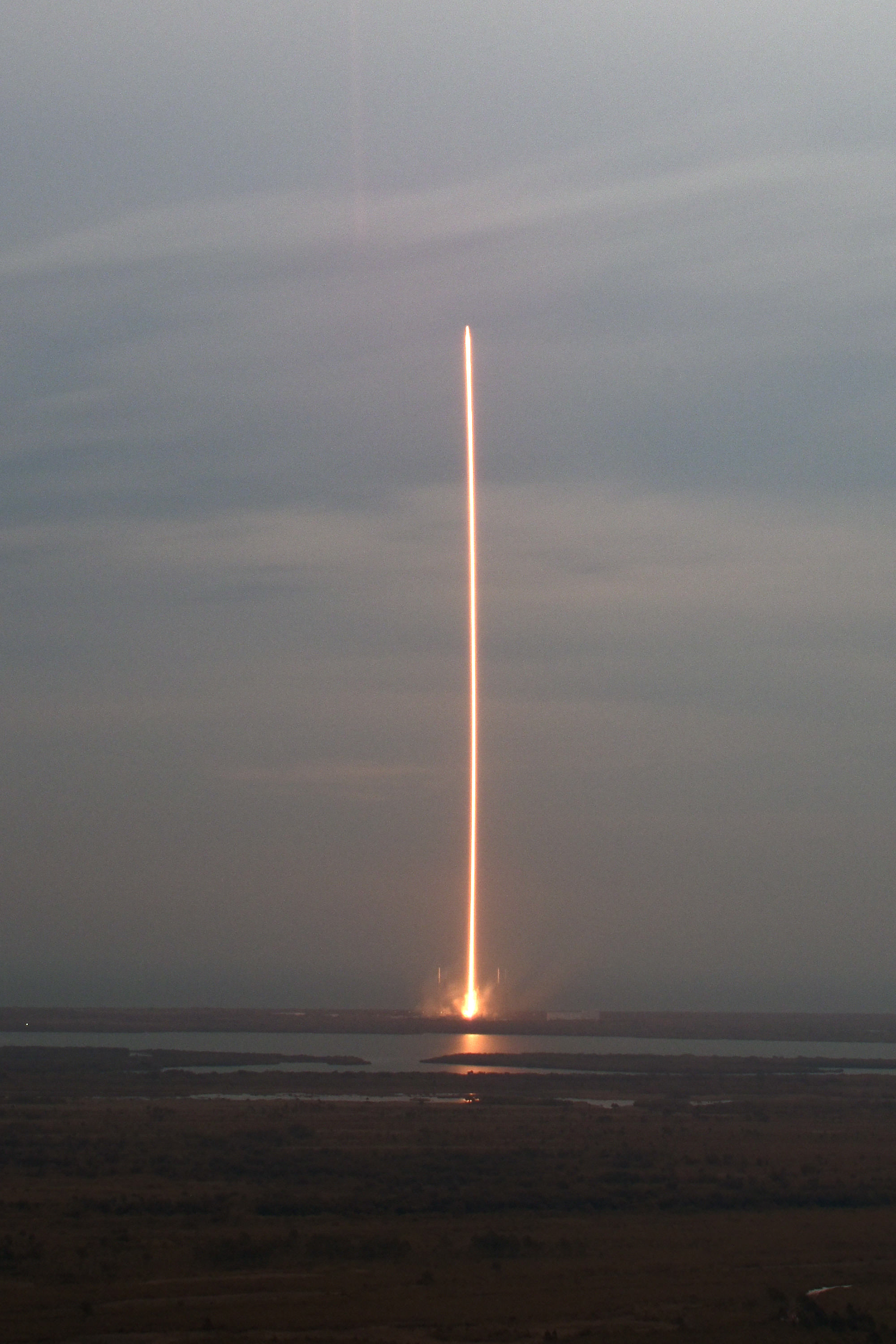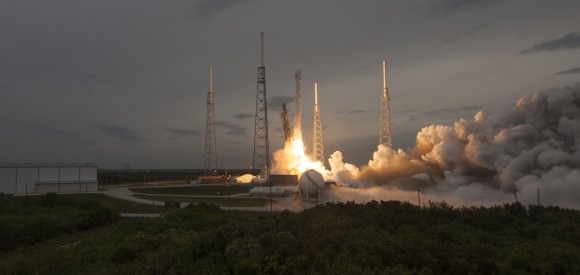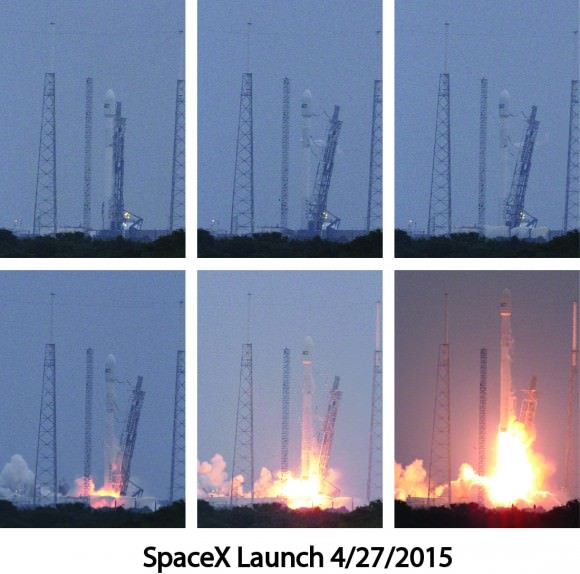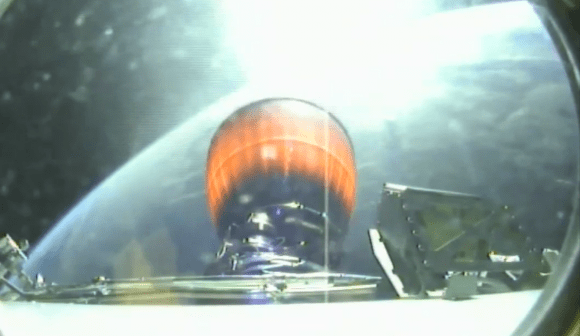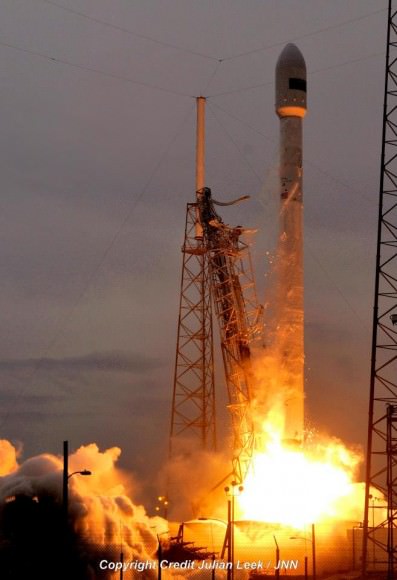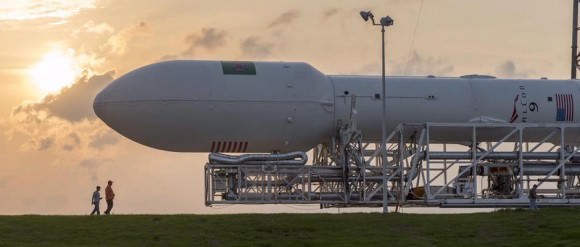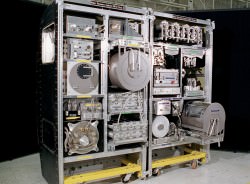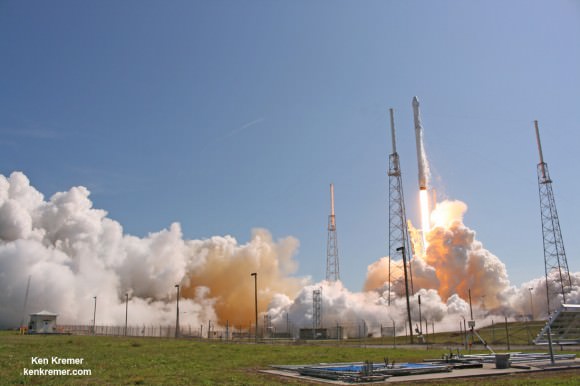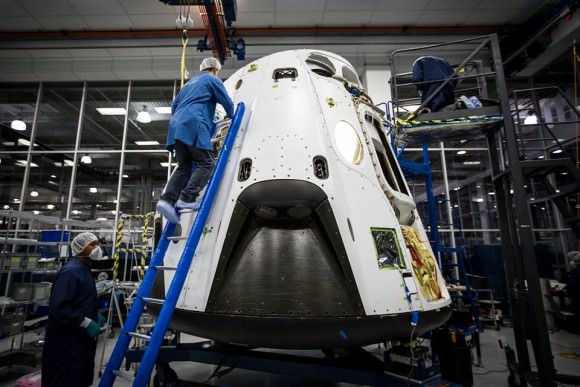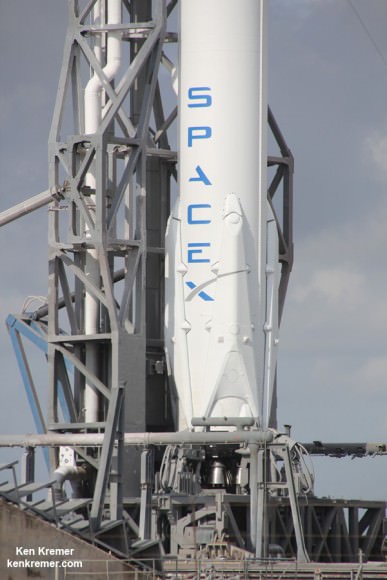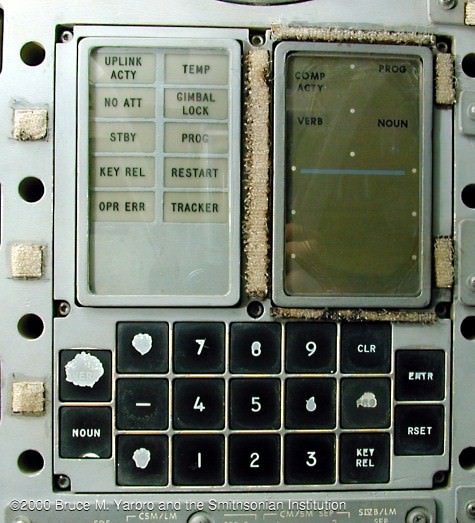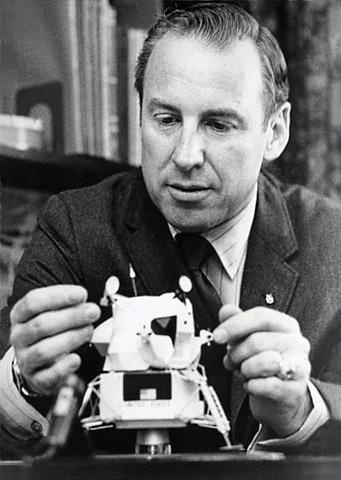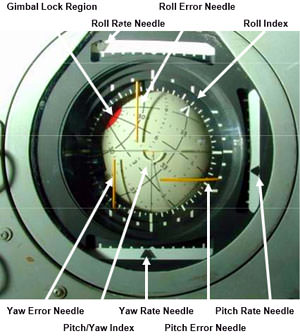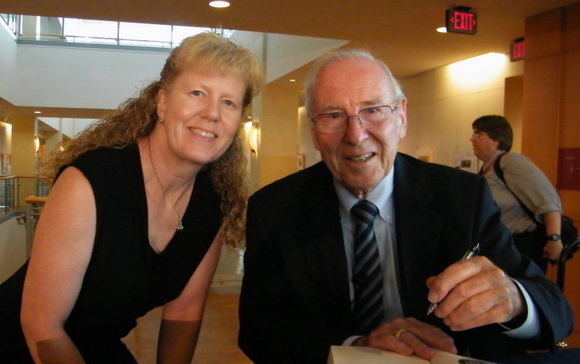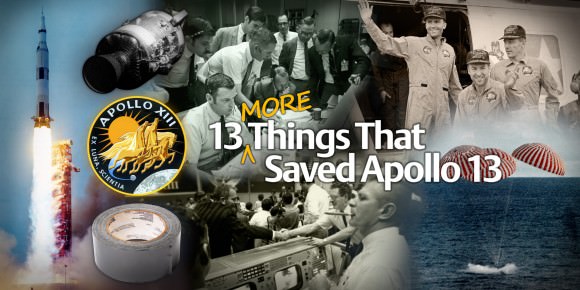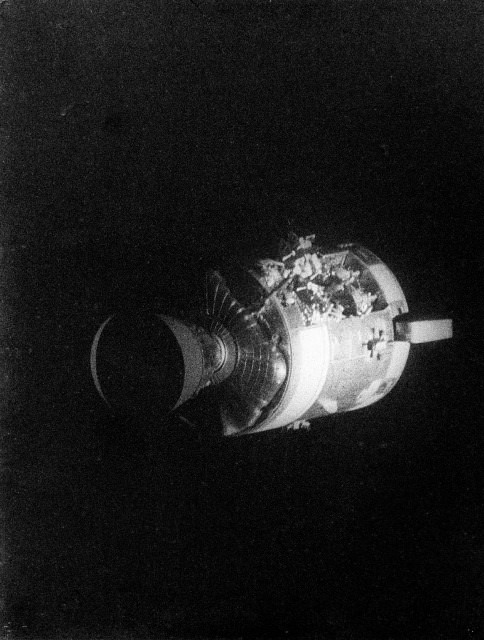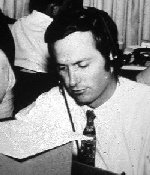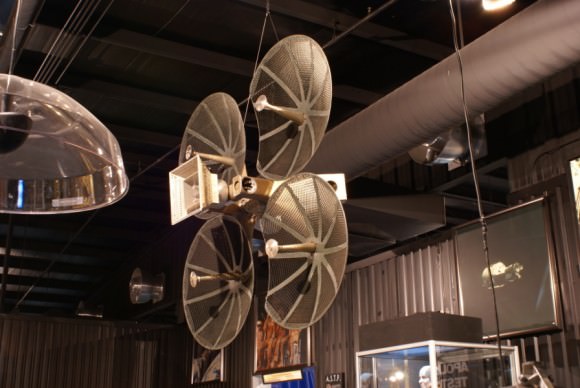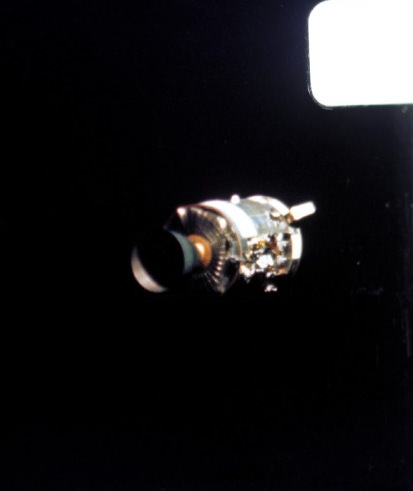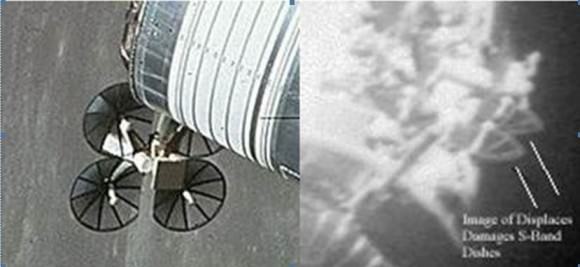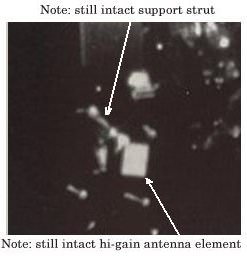To celebrate the 45th anniversary of the Apollo 13 mission, Universe Today is featuring “13 MORE Things That Saved Apollo 13,” discussing different turning points of the mission with NASA engineer Jerry Woodfill.
The night of the explosion on Apollo 13, engineers working in Mission Control and the back-up Mission Evaluation Room (MER) assessed the situation. There were numerous failures in different systems, and finally, instead of just looking at the failures, the engineers had to determine what was actually working on the spacecraft in order to rescue the crew.
A relatively recent term called ‘macgyvering’ was definitely at work during the Apollo 13 mission. Named for the lead character in the television series MacGyver – who usually used duct tape, a Swiss Army knife and anything else he could find to get himself out of sticky or dangerous situations -– macgyvering means solving complex problems by taking something ordinary and using it in an unusual way, but it works perfectly.
The engineers working during the Apollo 13 mission may have been the original “MacGyvers.”
According to NASA engineer Jerry Woodfill, his definition of a good engineer is “one who can take the simplest tool to accomplish the most complex task in the easiest way,” and its corollary, “The greatest engineer is one whose solution is so simple that no one sees his contribution as noteworthy.”
Some of the solutions for Apollo 13’s problems were ingenious. Others were simple, but definitely contributed to the crew’s rescue.
Here’s a look at a few ‘everyday’ items that either the crew were really glad to have on board during the rescue or items that were “macgyvered’ to solve a problem:

1. “Jumper cables”
Do you carry a set of jumper cables in your car? Apollo spacecraft didn’t actually have any jump-starting equipment, but a set of heater cables in the Lunar Module were macguyvered to perform as jumper cables.
There were 3 batteries in the Command Module to provide power for reentry, but after the explosion, they had been tapped for a short time to provide power when the fuel cells in the CM shut down. NASA engineers and flight controllers started looking at ways to try and recharge the batteries and came up with using heater cables from the LM in the reverse direction to charge the batteries for the reentry. It was never in the original design to charge the CM batteries from the LM, but the idea was to trickle-charge power from the large lander batteries to the modest capacity entry batteries.
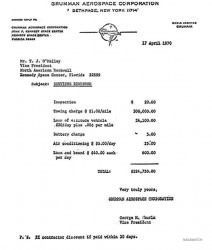
Two of three batteries were near full 40-amp-hour strength, but the third only had about half that amount. On a normal reentry, they would require 70 to 80 amp hours, but no one wanted to cut it that close on a mission that had so much going against it. So Mission Control told the crew to hook up a cable to the power system of the LM and recharge the weak battery. The process took about 15 hours and drew about 8 amps from the LM.
Famously, the company that built the LM, Grumman Aerospace, sent a mock invoice to the maker of the CM, following the successful return of Apollo 13 for LM’s “towing” service and included was a $5 charge for using the LM for “battery charge.”
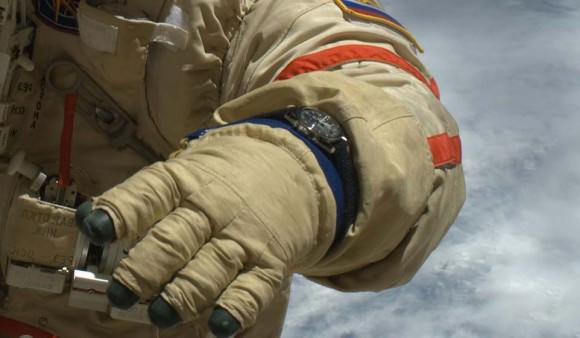
2. Watches
NASA supplied each of the Apollo astronauts with a standard issue OMEGA Speedmaster Professional manual-wind wristwatch. The astronauts were expected to wear them during the entire mission, and in fact, the watches were certified to be worn on all extra vehicular activities including the moonwalks. The version the crew used had a long Velcro strap, and with the adjustable strap, the watch could be worn on the outside of the pressure suits.
But more importantly – for Apollo 13 anyway – the watch included a chronograph or stopwatch, using the large third hand on the watch dial. This watch was used to time the manual engine burns to keep Apollo 13 on course and get them safely back to Earth.
However, this wasn’t the first time an Apollo mission used this type of watch in an ‘emergency.’ Buzz Aldrin wrote in his autobiography that an in-cabin timer in the LM had quit working and so during the moonwalk, Neil Armstrong left his Speedmaster inside and it served as a backup timer.
Since the Apollo 13 astronauts used their OMEGA Speedmaster Professionals to time a 14-second mid-course correction, when the company put out a commemorative version of the watch for this 45th anniversary, a small inscription is included on the dial between zero and 14 seconds that asks, “What could you do in 14 seconds?”
In April 1970, the OMEGA Speedmaster was given the “Silver Snoopy Award” from the astronauts for contributing to the rescue of Apollo 13 mission. Fred Haise’s Speedmaster is currently on display at the Penn-Harris-Madison Planetarium in Mishawaka, Indiana.
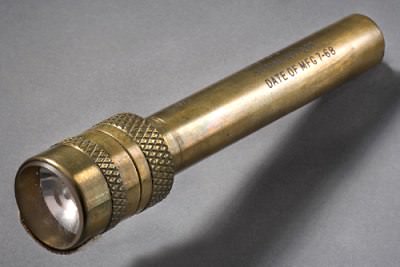
3. Flashlights.
When all the systems were shut down in the CM, the interior became dark and cold. Likewise, most sytems were shut down in the LM as well to save battery power. The crew used flashlights to make their way in the dark and cold cabins.
According to Space Flown Artifacts, NASA used the ACR Model FA-5 Penlight pictured above, a distinctive brass flashlight that were used from Apollo 7 to the early space shuttle missions. The same website quoted a letter dated Apr 19, 1971 from the Apollo 13 crew to ACR Electronics:
“The penlight which you have supplied for the Apollo missions has been very useful and dependable in all missions to date. However, you deserve special praise for the role it played on our mission – Apollo 13.
As you know, due to the explosion, we were forced to ration our electrical power and water. With regard to the former, we never turned on the lights in the spacecraft after the accident. As a result your penlights served as our means of “seeing” to do the job during the many hours of darkness when the sunlight was not coming through the windows. We never wore out even one set during the trip; in fact, they still illuminate today. Their size was also a convenience as it was handy to grip the light between clinched teeth to copy the lengthy procedures that were voiced up from Earth.”
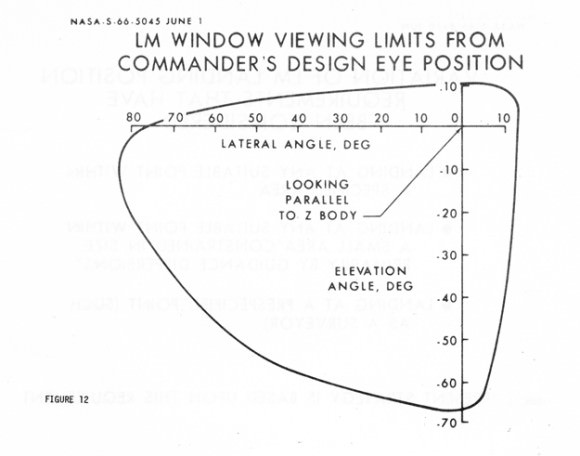
4. Window markings on the LM.
The special markings on the LM windows enabled Jim Lovell to hold course by aligning them with the Earth’s terminator. This was crucial to preventing too shallow an entry angle resulting in missing the entry point. According to a NASA report called “Apollo Lunar Module Landing Strategy,” the markings were part of the guidance system, and coupled with the computer system, made it possible for the pilot to “observe the intended landing area by aligning his line-of-sight with the grid marking according to information displayed from the guidance system.”
And so the crew used these markings in a way that wasn’t originally intended, but it made a big impact on the ability of the crew to navigate and fly the ship “by hand.”
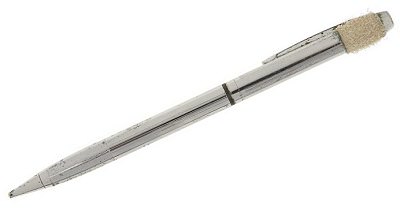
5. Pencils and pens.
Unlike the space shuttle and space station, there were no printers on board the Apollo spacecraft to print out daily planning reports and updates to the flight plan. The Apollo crews had to do things the ‘old fashioned way’ and used special mechanical pencils and pens that were flight certified to record modified checklist procedures called up to Apollo 13 by Mission Control — as the crew said above, they needed writing instruments to “copy the lengthy procedures that were voiced up from Earth.”
“Without them, crucial onboard operations could not have been performed,” said Woodfill
Again, according to Space Flown Artifacts, for most Apollo missions, the stowage lists show that each astronaut carried a Garland mechanical pencil, and despite the worldwide fame of the Fisher Space Pen it is probably the Garland mechanical pencil that was the most heavily-used writing instrument on the Apollo missions.
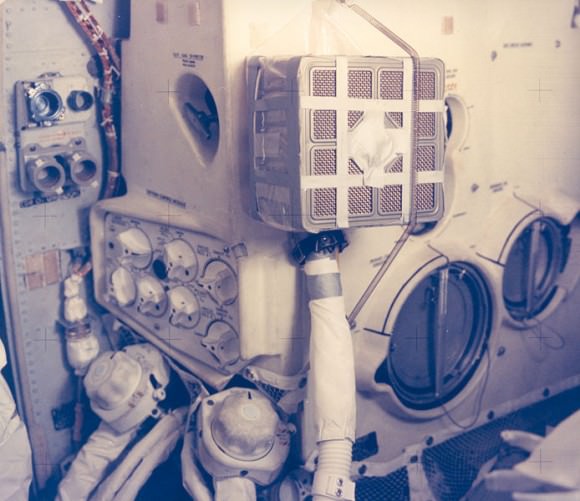
6. Duct tape, plastic bags, hoses and flight plan covers.
This is the ultimate in macgyvering! As we talked about in the original “13 Things That Saved Apollo 13” series, the crew had to create makeshift CO2 air scrubber out of things they had on the ship. This included duct tape to fashion a Rube Goldberg-like assemblage which the square CO2 filters from the CM to fit the round hole where the LM filters would go – so, fitting a “square peg into a round hole.”
Along with the duct tape were plastic bags that were mostly used for food and other storage, a vacuum-like cleaner/blower and hose that came from the space suits, and cardboard card stock used for the covers of the Apollo reference log manuals. These items all combined to manufacture a simple solution to save the Apollo 13 crew.

“Without the vacuum like blower called the suit fan and a suitable lengthy hose to route the blower’s airflow to the duct taped filters, rescue might not have happened,” said Woodfill.” “Yes, if not for everyday things on board the ship, perhaps the Apollo 13 crew would not have survived.”
Woodfill often talks to students and he was so taken by how simple things like duct tape saved the crew that he wrote a song ” Tribute to Duct Tape ” which he performs for kids as seen in this video of one of his classes done remotely via Skype:
Previous articles in this series:
Part 1: The Failed Oxygen Quantity Sensor
Part 2: Simultaneous Presence of Kranz and Lunney at the Onset of the Rescue
Part 3: Detuning the Saturn V’s 3rd Stage Radio
Part 4: Early Entry into the Lander
Part 5: The CO2 Partial Pressure Sensor
Part 6: The Mysterious Longer-Than-Expected Communications Blackout
Part 7: Isolating the Surge Tank
Part 8: The Indestructible S-Band/Hi-Gain Antenna
Find all the original “13 Things That Saved Apollo 13″ (published in 2010) at this link.


